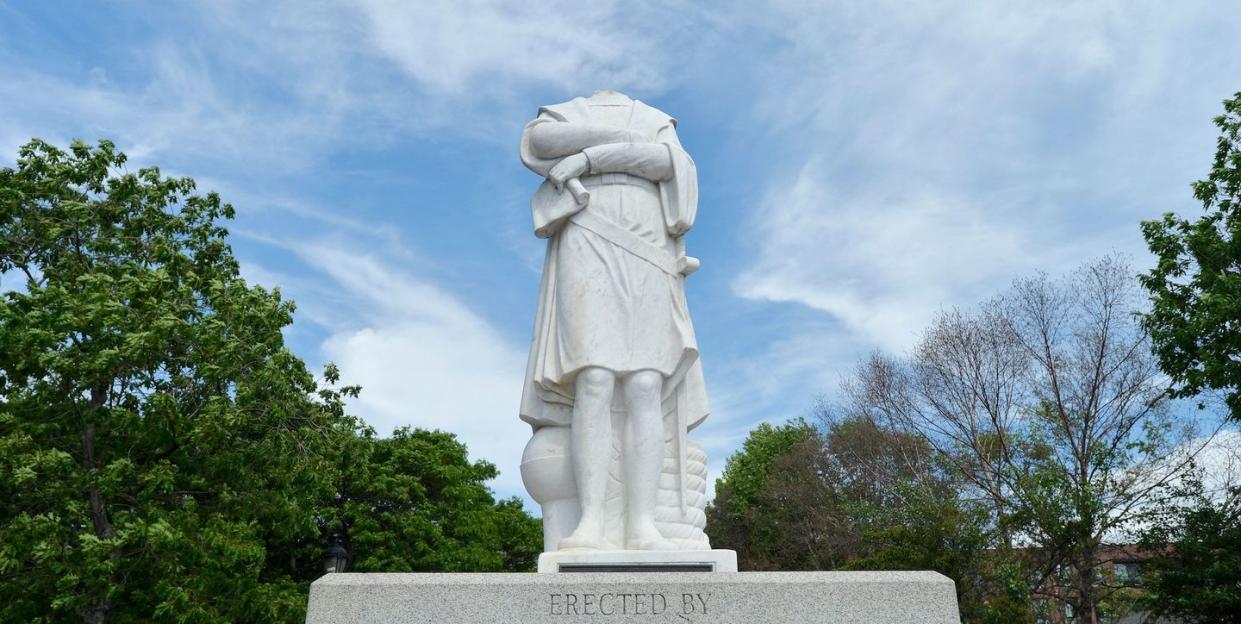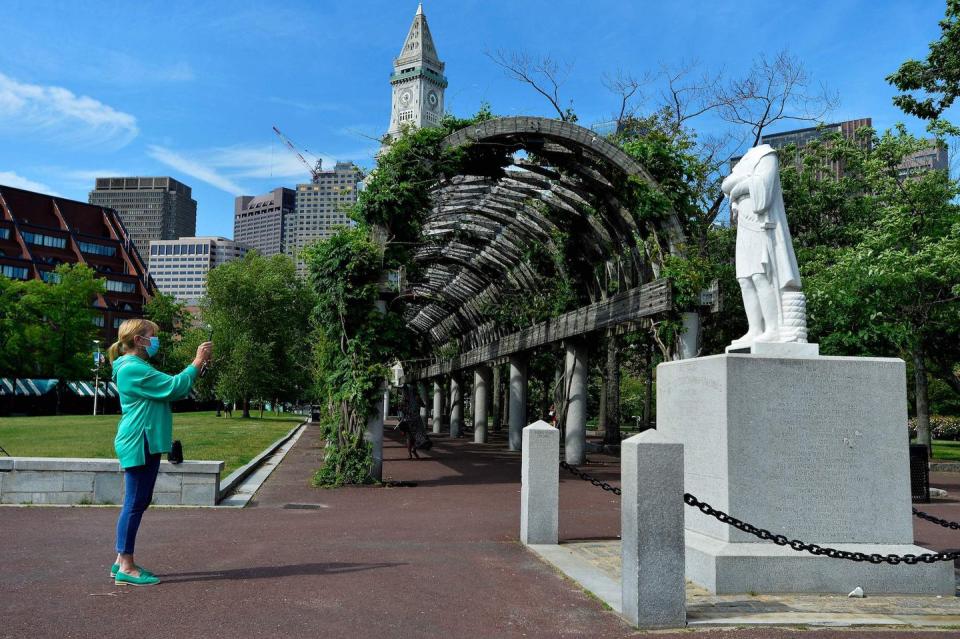Tearing Down These Monuments Doesn’t Erase History. It Rescues History.

Columbus Circle's most prominent marble resident must be shaking in his buckled boots. After a statue of Christopher Columbus in Richmond, Virginia was torn down and thrown in a lake Tuesday night, the nation awoke Wednesday morning to learn another effigy of the Genovese who sailed for Spain had been beheaded in Boston's North End. It's a reminder of his ubiquity in the American public square, and a sign of how fast things are moving. How long until Central Park's southwest corner comes under new management?
The argument in favor of removing Columbus from his current position leering down on people from on high—in the case of Manhattan's statue, 76 feet above the street—is that he was a rampaging genocidaire and slaver who promoted the rape of Native women and girls among his lieutenants and sanctioned the murder of infants. His crimes against humanity were brutal and widespread, and he was at one point sent back to Spain in shackles, though that may have been down to more of a political dispute with a royal emissary sent to investigate his mismanagement of the Spanish colony on Hispaniola. He ultimately escaped with a pardon, both in law and in history.
Because that's what's really going on here. It's about the history. When you build a statue of someone and place it at a center of civic life, it's not a statement that they existed, or that they did things. Many people have lived and died and done things in between. It's a statement that they should be honored, revered, held up as an icon around which we should organize our society. That their deeds, and the values they lived by, should be a source of inspiration for us all in the here and now. And the only way that Christopher Columbus gets that kind of honor is if you teach kids in school that he sailed the ocean blue in 1492 and leave out the murder. That he discovered North America—he didn't—but not that he systematically mutilated human beings who failed to deliver him enough gold. Otherwise, the kids might start asking why there's a statue of a mass murderer in town. Children, strangely, are rarely so confused about all this. They know what it means when something is big and tall and in the center of things.
It's about history, but not in the way people who defend Confederate monuments like to talk about it. These statues are not constructed to communicate history: they tell you little about Columbus, or Nathan Bedford Forrest, except that they were worthy of honor. But they are not. They are the the beneficiaries of false histories, written and rewritten down the decades as much to absolve ourselves as these men. It is far more difficult to engage in unequivocal American patriotism when you learn the image of Thanksgiving—Native peoples and "settlers" living in harmony, sharing the rich bounty of a vast, unspoiled land—is something of an outlier.

The real story is that this country was built on rabid, violent expansionism, on the imperial impulse to conquer and plunder, on the constructed myth of whiteness as a self-legitimizing source of power. The Confederate monuments are built on historical mythology not unrelated, the Lost Cause story spun up decades after Appomattox to elide the truth that one side in the Civil War committed treason against the United States in defense of slavery. The statues are a reiteration of the theory of white supremacy, built in periods of horrific racial backlash, erected in the town square to remind everyone how things are going to work around here. The Lost Cause was the legitimizing foundation for Jim Crow. Forrest, for his part, followed up his career in the Confederate army by joining the Ku Klux Klan as its first Grand Wizard. Republicans in the Tennessee state legislature voted yesterday—June 9, 2020—to keep a statue of him standing in their statehouse. A monument to lawless violence in the place where laws are made.
The destruction of these monuments is an act that strikes a blow on behalf of history, not against it. It is a heroic act to tear down the false idols of empire, to fight for the truth over a lie that help injustice to perpetuate itself. That's why, in such a strange coincidence, a massive group of violent white supremacists showed up to try to preserve a statue of Robert E. Lee in Charlottesville three years ago. They didn't show up because Lee was just an honorable man who chose to fight for his family and his home state of Virginia. They showed up because he was a violent white supremacist who, when he advanced into Union territory during the war, took free black men into slavery. As a slaveowner himself, Lee was particularly cruel, systematically separating families he held in bondage. His statue's former pride of place told us, with a wink and a nod, that the residual effects of that same ideological force—and the social structures it continues to produce—are should govern us.
They should not. It is not erasing history to tear down these statues, it is rescuing it. Remove them from their places of honor in the public square and place them in museums, where other artifacts of genocidal horror can be found. Put them in a field somewhere, as other nations have done, to be reclaimed in the natural order of a continent their namesakes often did so much to despoil. The monuments' defenders are right that it is vitally important to preserve history, but not theirs. Teach people about the texts of various Confederate state constitutions, which explicitly cite maintaining the institution of slavery as justification for their secession from the Union. Teach people what Columbus did to the Taíno. Teach them about redlining. Teach them what the current president's hero, Andrew Jackson, did with the Indian Removal Act. But don't communicate to them, with monuments in the public square, that anyone involved in any of this is some kind of hero.
You Might Also Like
